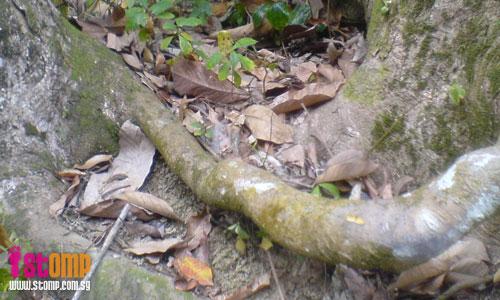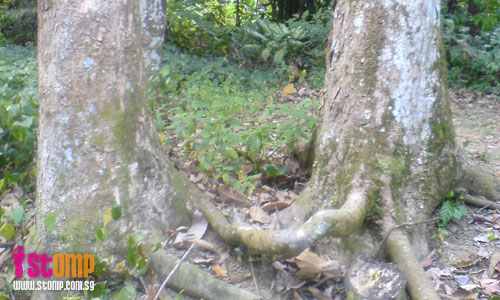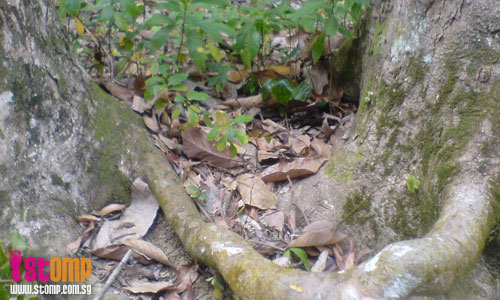
How did these two trees come to share a single root? That's what STOMPer Jerry wants to know after spotting the conjoined trees in Yishun Park.
He says in an e-mail dated February 20:
"Please see these pictures.
"I found these two trees in Yishun Park.
"It seems like both tall old trees have merged their roots. Or were they twins in the first place?
"How is the water distributed within the roots?
"Not sure how this could have happened."
Do you have any idea? Let us know.


The explanation is very simple: these trees are most likely part of a single organism.
Many plants have an extensive network of roots or underground stems that will send up new shoots at intervals. Thus what appears to be a grove of several trees may actually turn out to be a single "supertree", with the individual trees being clones of one another, having sprouted from the same root system. The quaking aspen (Populus tremuloides) is a North American tree well-known for this trait. Huge colonies may extend over several hectares, and collectively weight several tonnes. One such quaking aspen colony, nicknamed "Pando", which grows in the state of Utah in the United States of America, is estimated to encompass 43 hectares and weigh 6,000 tonnes, making it the heaviest known organism.

Quaking aspen grove in Utah. This grove is a part of "Pando"
(Photo taken from Wikipedia)
In Southeast Asia, the Nipah palm (Nypa fruticans) is similar in this regard; this palm appears to lack a trunk, but what's actually happening is that the trunk grows horizontally underground, with leaf fronds sprouting from it at intervals. Hence, dense stands of this palm growing in mangroves are often sprouting from a single trunk.